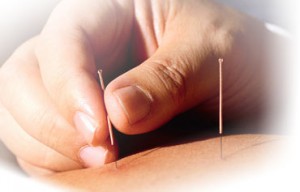The Theory

Very fine Acupuncture needles
According to the theory of Chinese medicine, the human being has 14 meridians or channels. They form a network that carries and passes all information and Qi (energy) in the body. It believes that Qi can be enhanced, improved and nourished. On these meridians, there are many points (pressure points) that have important functions. Each point may be considered as a switch that controls energy flow. Direct causes of some illnesses are due to some switches being out of control, such that Qi (energy) is blocked.
The principles of Acupuncture are to adjust and repair those switches and to bring the energy flow under control, and thus cure illness. Practitioners (acupuncturists) apply sterile, single-use needles to pressure points to repair these switches according to principles of Chinese medicine and the patient’s conditions.
Is it pain?
Acupuncture is virtually painless. Compared to injections or blood test, acupuncture needs are much finer. Patients may only feel the slightest pricking sensation followed by a tingling or dull-ache. As a rule of thumb, it is better to produce that little sensation to achieve improvement, but some people feel nothing at all.
Oddly enough, many people find that Acupuncture makes them feel relaxed and happy.
Acupuncture is also associated with Massage, Moxibustion, Acupressure and Cupping, which are almost painless manipulations. After acupuncture, patients will feel relaxed or even slightly sleepy so it is not advisable for patients to undertake anything strenuous for a few hours afterwards.


